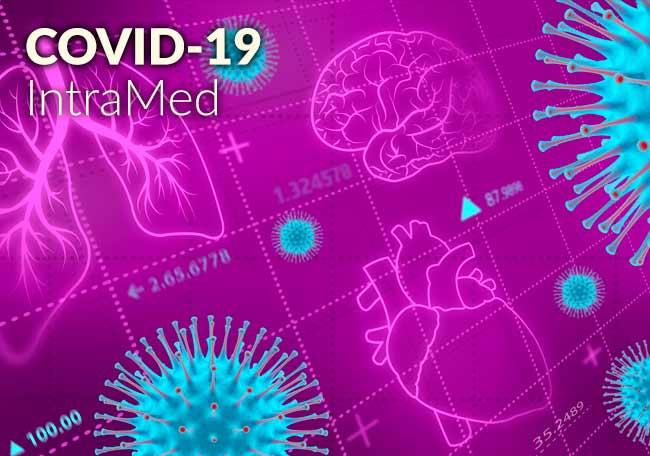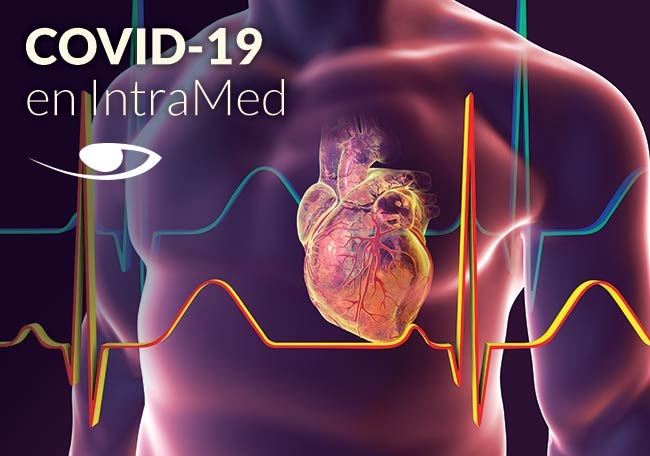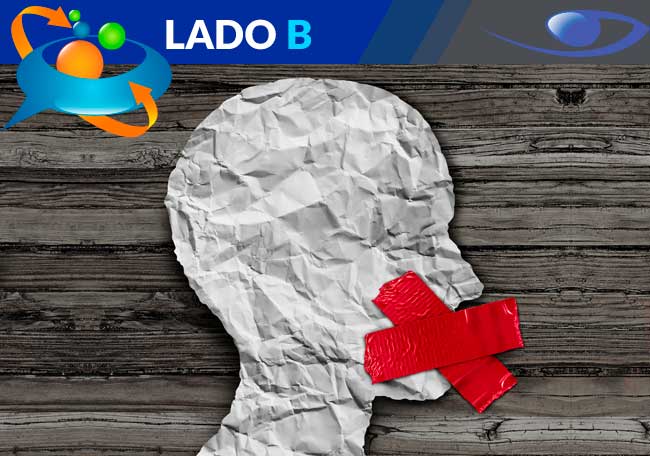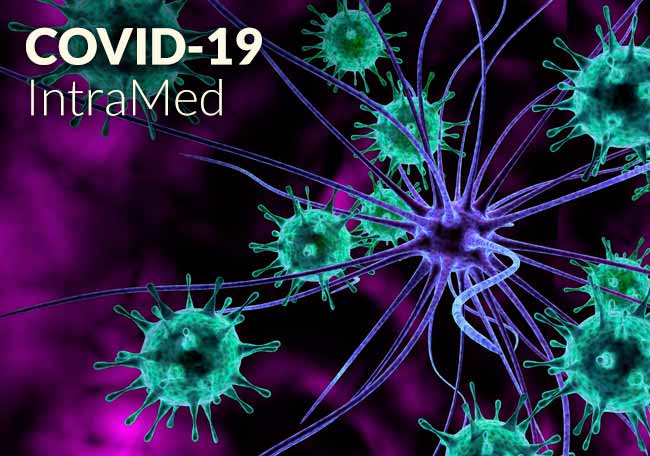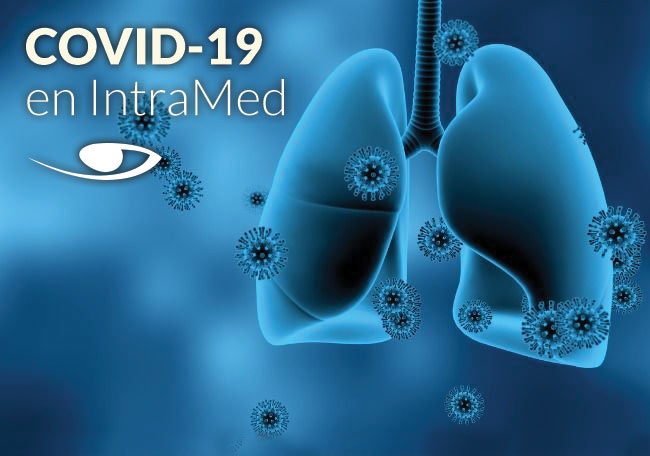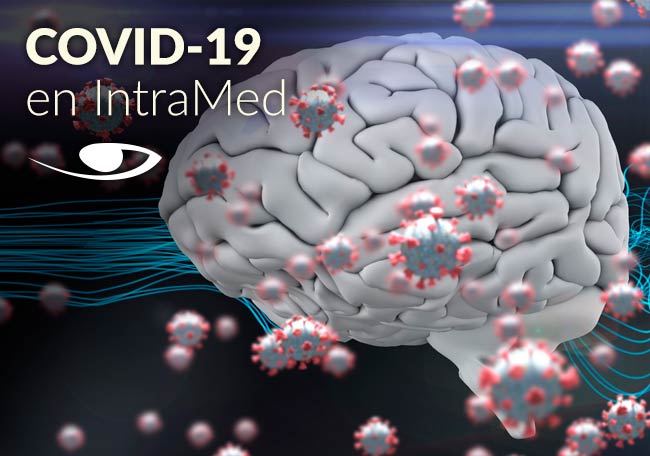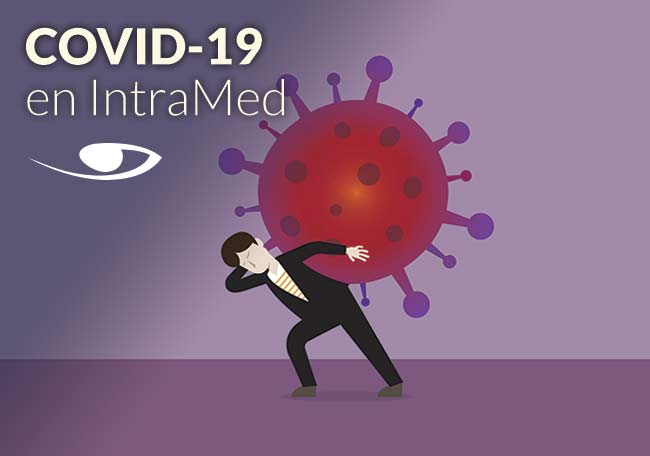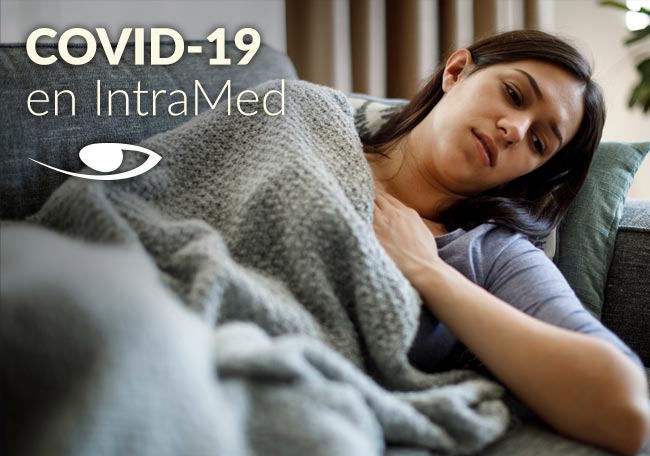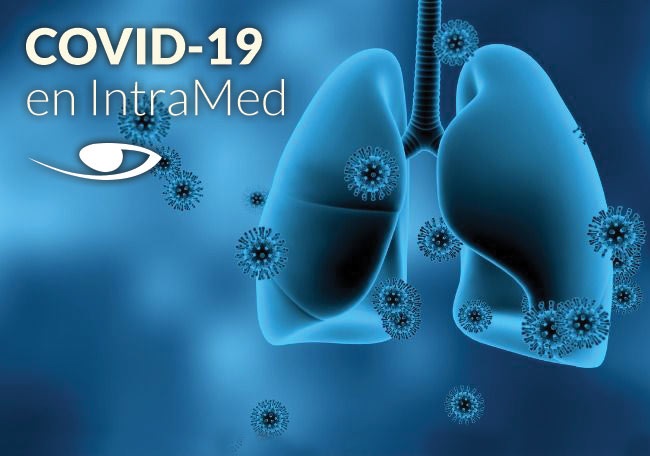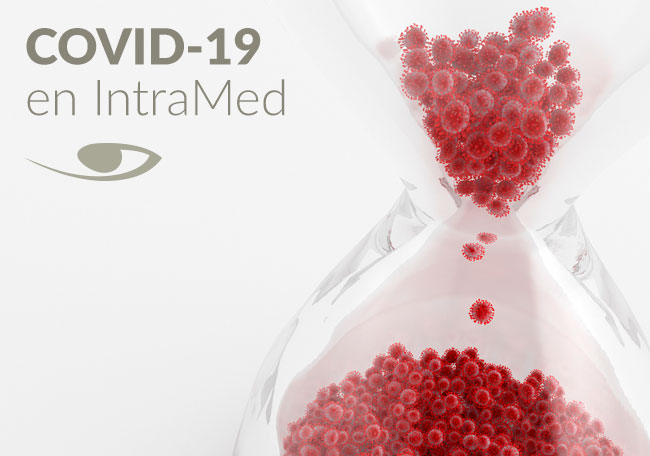COVID-19 prolongado
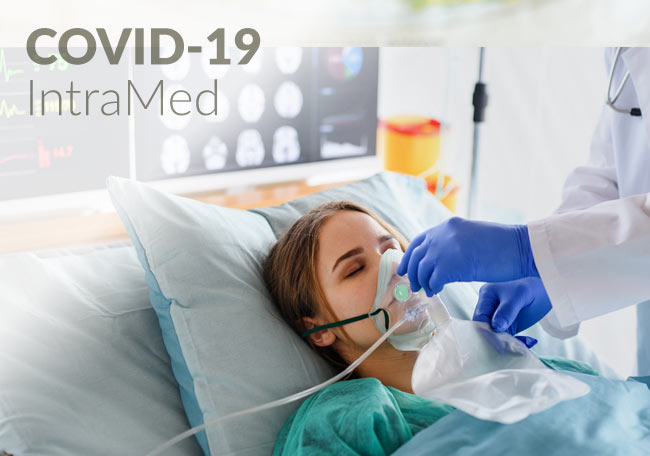
[1] Hu B, Guo H, Zhou P, et al. Characteristics of SARS-CoV-2 and COVID. Nat Rev Microbiol. 2020;19(3):141–154.
[2] Maxwell E. ’Living with Covid19: A dynamic review of the evidence around ongoing Covid19 symptoms (often called Long Covid).’, (updated 30th September 2020) <https://evidence.nihr.ac.uk/themedreview/living-withcovid19/>, accessed 31st January 2021.
[3] Rubin R. As Their Numbers Grow, COVID-19 “Long Haulers” Stump Experts. JAMA. 2020;324(14):1381–1383.
[4] Callard F, Perego E. How and why patients made Long Covid. Social Science & Medicine. 2021;268:113426.
[5] Altmann DM, Boyton RJ. Decoding the unknowns in long covid. BMJ. 2021;372:n132.
[6] Baig AM. Deleterious outcomes in long-Hauler COVID-19: the effects of SARS-CoV-2 on the CNS in chronic COVID syndrome. ACS Chem Neurosci. 2020;11(24);4017–4020.
[7] Venkatesan P. NICE guideline on long COVID’. The Lancet Respiratory Medicine. 2021;9(2):129.
[8] Nath A. Long-Haul COVID. Neurology. 2020;95(13): 559–560.
[9] Brodin P. Immune determinants of COVID-19 disease presentation and severity. Nat Med. 2021;27(1):28–33. [10] Davido B, et al. Post-COVID-19 chronic symptoms: a postinfectious entity? Clin Microbiol Infect. 2020;26(11): 1448–1449.
[11] Datta SD, Talwar A, Lee JT. A proposed framework and timeline of the spectrum of disease due to SARS-CoV-2 infection: illness beyond acute infection and public health implications. JAMA. 2020;324(22):2251–2252.
[12] Mendelson M, Nel J, Blumberg L, et al. Long-COVID: An evolving problem with an extensive impact. S Afr Med J. 2020;111(1):10–12.
[13] Sivan M, Taylor S. NICE guideline on long covid. BMJ. 2020;371:m4938.
[14] Nalbandian A, Sehgal K, Gupta A, et al. Post-acute COVID- 19 syndrome. Nat Med. 2021;27(4):601–615.
[15] Fernandez-de-Las-Penas C, Palacios-Cena D, Gomez- Mayordomo V, et al. Defining post-COVID Symptoms (post-acute COVID, long COVID, persistent post-COVID):an integrative classification’. Int J Environ Res Public Health. 2021;18(5):2621.
[16] Greenhalgh T, Knight M, A’Court C, et al. Management of post-acute covid-19 in primary care. BMJ. 2020;370: m3026.
[17] Shah W, Hillman T, Playford ED, et al. Managing the long term effects of covid-19: summary of NICE, SIGN, and RCGP rapid guideline. BMJ. 2021;372:n136.
[18] Cares-Marambio K, Montenegro-Jim_enez Y, Torres-Castro R, et al. Prevalence of potential respiratory symptoms in survivors of hospital admission after coronavirus disease 2019 (COVID-19): A systematic review and meta-analysis. Chron Respir Dis. 2021;18:14799731211002240.
[19] Arnold DT, Hamilton FW, Milne A, et al. Patient outcomes after hospitalisation with COVID-19 and implications for follow-up: results from a prospective UK cohort. Thorax. 2020;76:399–401.
[20] Bellan M, Soddu D, Balbo PE, et al. Respiratory and psychophysical sequelae among patients with COVID-19 four months after hospital discharge. JAMA Netw Open. 2021; 4(1):e2036142.
[21] Carfi A, Bernabei R, Landi F; Gemelli Against COVID-19 Post-Acute Care Study Group. Persistent symptoms in patients after acute COVID-19. JAMA. 2020;324(6):603–605.
[22] Cirulli ET, Schiabor Barrett KM, Riffle S, et al. Long-term COVID-19 symptoms in a large unselected population. medRxiv. 2020. DOI:10.1101/2020.10.07.20208702
[23] Davis HE, Assaf GS, McCorkell L, et al. Characterizing long COVID in an International Cohort: 7 months of Symptoms and their impact. medRxiv. 2020. DOI:10.1101/2020.12.24.20248802
[24] Dennis A, Wamil M, Alberts J, et al. Multiorgan impairment in low-risk individuals with post-COVID-19 syndrome: a prospective, community-based study. BMJ Open. 2021;11(3):e048391.
[25] Garrigues E, Janvier P ,Kherabi Y, et al. Post-discharge persistent symptoms and health-related quality of life after hospitalization for COVID-19. J Infect. 2020;81(6):e4–e6.
[26] Han X, Fan Y, Alwalid O, et al. Six-month follow-up chest CT findings after severe COVID-19 pneumonia. Radiology. 2021;299(1):E177–E186.
[27] Huang C, Huang L, Wang Y, et al. 6-month consequences of COVID-19 in patients discharged from hospital: a cohort study. The Lancet. 2021;397(10270):220–232.
[28] Lerum TV, Aaløkken TM, Brønstad E, et al. Dyspnoea, lung function and CT findings three months after hospital admission for COVID. Eur Respir J. 2021;57(4):2003448.
[29] Liang L, Yang B, Jiang N, et al. Three-month Follow-up Study of Survivors of Coronavirus Disease 2019 after Discharge. J Korean Med Sci. 2020;35(47):e418.
[30] Lu Y, Li X, Geng D, et al. Cerebral micro-structural changes in COVID-19 patients – An MRI-based 3-month follow-up study. EClinicalMedicine. 2020;25:100484.
[31] Miyazato Y, Morioka S, Tsuzuki S, et al. Prolonged and late-onset symptoms of coronavirus disease 2019. Open Forum Infect Dis. 2020;7(11):ofaa507.
[32] Petersen MS, Kristiansen MF, Hanusson KD, et al. Long COVID in the Faroe Islands – a longitudinal study among non-hospitalized patients. Clin Infect Dis. 2020;ciaa1792.
[33] Simani L, Ramezani M, Darazam IA, et al. Prevalence and correlates of chronic fatigue syndrome and post-traumatic stress disorder after the outbreak of the COVID-19. J Neurovirol. 2021;27(1):154–159.
[34] Shah AS, Wong AW, Hague CJ, et al. A prospective study of 12-week respiratory outcomes in COVID-19-related hospitalisations. Thorax. 2021;76(4):402–404.
[35] Sonnweber T, Sahanic S, Pizzini A, et al. Cardiopulmonary recovery after COVID-19 – an observational prospective multi-center trial’. ’ Eur Respir J. 2020;57(4):2003481.
[36] Stavem K, Ghanima W, Olsen MK, et al. 1.5-6 months after COVID-19 in non-hospitalised subjects: a population-based cohort study. Thorax. 2021;76(4):405.
[37] Sudre CH, Murray B, Varsavsky T, et al. Attributes and predictors of long COVID. Nat Med. 2021;27(4):626–631.
[38] Taboada M, Carinena A, Moreno E, et al. Post-COVID-19 functional status six-months after hospitalization. J Infect. 2020;82(4):e31–e33.
[39] Townsend L, Dyer AH, Jones K, et al. Persistent fatigue following SARS-CoV-2 infection is common and independent of severity of initial infection. PLoS One. 2020;15(11):e0240784.
[40] Truffaut L, Demey L, Bruyneel AV, et al. Post-discharge critical COVID-19 lung function related to severity of radiologic lung involvement at admission. Respir Res. 2021;22(1):29.
[41] van den Borst B, et al. Comprehensive health assessment three months after recovery from acute COVID-19. Clin Infect Dis. 2020;ciaa1750.
[42] van Gassel RJJ, Bels JLM, Raafs A, et al. High Prevalence of Pulmonary Sequelae at 3 Months After Hospital Discharge in Mechanically Ventilated COVID-19 Survivors. Am J Respir Crit Care Med. 2021;203(3):371–374.
[43] Wong AW, Shah AS, Johnston JC, et al. Patient-reported outcome measures after COVID-19: a prospective cohort study. Eur Respir J. 2020;56(5):2003276.
[44] Woo MS, Malsy J, Pottgen J, et al. Frequent neurocognitive deficits after recovery from mild COVID-19. Brain Commun. 2020;2(2):fcaa205.
[45] Xiong Q, Xu M, Li J, et al. Clinical sequelae of COVID-19 survivors in Wuhan, China: a single-centre longitudinal study’. Clin Microbiol Infect. 2021;27(1):89–95.
[46] Zhao YM, Shang YM, Song WB, et al. Follow-up study of the pulmonary function and related physiological characteristics of COVID-19 survivors three months after recovery. EClinicalMedicine. 2020;25:100463.
[47] McMahon DE, Gallman AE, Hruza GJ, et al. Long COVID in the skin: a registry analysis of COVID-19 dermatological duration. The Lancet Infectious Diseases. 2021;21(3):313–314.
[48] Amenta EM, et al. Postacute COVID-19: An Overview and Approach to Classification. Open Forum Infect Dis. 2020; 7(12):ofaa509.
[49] Rando HM, Bennett TD, Byrd JB, et al. Challenges in defining Long COVID: Striking differences across literature, Electronic Health Records, and patient-reported information. medRxiv. 2021. DOI:10.1101/2021.03.20.21253896
[50] Townsend L, Dowds J, O’Brien K, et al. Persistent por health post-COVID-19 is not associated with respiratory complications or initial disease severity. Ann Am Thorac Soc. 2021. DOI:10.1513/AnnalsATS.202009-1175OC
[51] Buonsenso D, Espuny Pujol F, Munblit D, et al. Clinical characteristics, activity levels and mental health problems in children with Long COVID: a survey of 510 children. Preprints. 2021. DOI:10.20944/preprints202103.0271.v1
[52] Buonsenso D, Munblit D, De Rose C, et al. Preliminary Evidence on Long Covid in children. Acta Paediatr. 2021. DOI:10.1111/apa.15870
[53] Ludvigsson JF. Case report and systematic review suggest that children may experience similar long-term effects to adults after clinical COVID. Acta Paediatr. 2021;110(3):914–921.
[54] Das KM, Lee EY, Singh R, et al. Follow-up chest radiographic findings in patients with MERS-CoV after recovery. Indian J Radiol Imaging. 2017;27(3):342–349.
[55] Lee SH, Shin H-S, Park HY, et al. Depression as a Mediator of Chronic Fatigue and Post-Traumatic Stress Symptoms in Middle East Respiratory Syndrome Survivors. Psychiatry Investig. 2019;16(1):59–64.
[56] Lam MH. Mental morbidities and chronic fatigue in severe acute respiratory syndrome survivors: long-term follow-up. Arch Intern Med. 2009;169(22):2142–2147.
[57] Ngai JC, Ko FW, Ng SS, et al. The long-term impact of severe acute respiratory syndrome on pulmonary function, exercise capacity and health status. Respirology. 2010; 15(3):543–550.
[58] Rogers JP, Chesney E, Oliver D, et al. Psychiatric and neuropsychiatric presentations associated with severe coronavirus infections: a systematic review and meta-analysis with comparison to the COVID-19 pandemic. The Lancet Psychiatry. 2020;7(7):611–627.
[59] Zhang P, Li J, Liu H, et al. Long-term bone and lung consequences associated with hospital-acquired severe acute respiratory syndrome: a 15-year follow-up from a prospective cohort study. Bone Res. 2020;8(1):8.
[60] Zhao FC, Guo KJ, Li ZR. Osteonecrosis of the femoral head in SARS patients: seven years later. Eur J Orthop Surg Traumatol. 2013;23(6):671–677.
[61] Liu D, Zhang W, Pan F, et al. The pulmonary sequalae in discharged patients with COVID-19: a short-term observational study. Respir Res. 2020;21(1):125.
[62] Marvisi M, Ferrozzi F, Balzarini L, et al. First report on clinical and radiological features of COVID-19 pneumonitis in a Caucasian population: Factors predicting fibrotic evolution. Int J Infect Dis. 2020;99:485–488.
[63] Wei J, Yang H, Lei P, et al. Analysis of thin-section CT in patients with coronavirus disease (COVID-19) after hospital discharge. J Xray Sci Technol. 2020;28(3):383–389.
[64] Li H, Zhao X, Wang Y, et al. Damaged lung gas-exchange function of discharged COVID-19 patients detected by hyperpolarized (129)Xe MRI. Sci Adv. 2020;7(1):eabc8180.
[65] Crameri GAG, Bielecki M, Z€ust R, et al. Reduced maximal aerobic capacity after COVID-19 in young adult recruits, Switzerland, May 2020. Euro Surveill. 2020;25(36):2001542.
[66] Krishna R, Chapman K, Ullah S. 2020. ’Idiopathic Pulmonary Fibrosis’, StatPearls (Treasure Island (FL)).
[67] Swigris JJ, Streiner DL, Brown KK, et al. Assessing exertional dyspnea in patients with idiopathic pulmonary fibrosis. Respir Med. 2014;108(1):181–188.
[68] Paterson RW, Brown RL, Benjamin L, et al. The emerging spectrum of COVID-19 neurology: linical, radiological and laboratory findings. Brain. 2020;143(10):3104–3120. 14 S. J. YONG
[69] Mao L, Jin H, Wang M, et al. Neurologic manifestations of hospitalized patients with coronavirus disease 2019 in Wuhan, China. JAMA Neurol. 2020;77(6):683–690.
[70] Mendez R, Balanz_a-Mart_inez V, Luperdi SC, et al. Shortterm neuropsychiatric outcomes and quality of life in COVID-19 survivors. J Intern Med. 2021. DOI:10.1111/joim.13262
[71] O’Hanlon S, Inouye SK. Delirium: a missing piece in the COVID-19 pandemic puzzle. Age Ageing. 2020;49(4): 497–498.
[72] Girard TD, Jackson JC, Pandharipande PP, et al. Delirium as a predictor of long-term cognitive impairment in survivors of critical illness. Crit Care Med. 2010;38(7): 1513–1520.
[73] Gross AL, Jones RN, Habtemariam DA, et al. Delirium and long-term cognitive trajectory among persons with dementia. Arch Intern Med. 2012;172(17):1324–1331.
[74] Dani M, Dirksen A, Taraborrelli P, et al. Autonomic dysfunction in ’long COVID’: rationale, physiology and management strategies. Clin Med. 2021;21(1):e63–e67.
[75] Taquet M, Geddes JR, Husain M, et al. 6-month neurological and psychiatric outcomes in 236 379 survivors of COVID-19: a retrospective cohort study using electronic health records’. The Lancet Psychiatry. 2021;8(5):416–427.
[76] Ackermann M, Verleden SE, Kuehnel M, et al. Pulmonary vascular endothelialitis, thrombosis, and angiogenesis in Covid-19. N Engl J Med. 2020;383(2):120–128.
[77] Chu H, Chan JF, Yuen TT, et al. Comparative tropism, replication kinetics, and cell damage profiling of SARS-CoV-2 and SARS-CoV with implications for clinical manifestations, transmissibility, and laboratory studies of COVID-19: an observational study. The Lancet Microbe. 2020;1(1):e14–e23.
[78] Sun S-H, Chen Q, Gu H-J, et al. A Mouse Model of SARSCoV-2 Infection and Pathogenesis. Cell Host Microbe. 2020;28(1):124–133 e4.
[79] von Weyhern CH, Kaufmann I, Neff F, et al. Early evidence of pronounced brain involvement in fatal COVID-19 outcomes. The Lancet. 2020;395(10241):e109.
[80] Zhang B-Z, Chu H, Han S, et al. SARS-CoV-2 infects human neural progenitor cells and brain organoids. Cell Res. 2020;30(10):928–931.
[81] Gandhi S, Srivastava AK, Ray U, et al. Is the collapse of the respiratory center in the brain responsible for respiratory breakdown in COVID-19 patients? ACS Chem Neurosci. 2020;11(10):1379–1381.
[82] Li YC, Bai WZ, Hashikawa T. The neuroinvasive potential of SARS-CoV2 may play a role in the respiratory failure of COVID-19 patients. J Med Virol. 2020;92(6):552–555.
[83] Yong SJ. Persistent Brainstem Dysfunction in Long-COVID: A Hypothesis. ACS Chem Neurosci. 2021;12(4):573–580.
[84] Lukiw WJ, Pogue A, Hill JM. SARS-CoV-2 Infectivity and Neurological Targets in the Brain. Cell Mol Neurobiol. 2020. DOI:10.1007/s10571-020-00947-7
[85] Matschke J, L€utgehetmann M, Hagel C, et al. Neuropathology of patients with COVID-19 in Germany: a post-mortem case series. The Lancet Neurology. 2020; 19(11):919–929.
[86] Meinhardt J, Radke J, Dittmeyer C, et al. Olfactory transmucosal SARS-CoV-2 invasion as a port of central nervous system entry in individuals with COVID-19. Nat Neurosci. 2020;24:168–175.
[87] Solomon IH, Normandin E, Bhattacharyya S, et al. Neuropathological Features of Covid-19. N Engl J Med. 2020;383(10):989–992.
[88] Puntmann VO, Carerj ML, Wieters I, et al. Outcomes of cardiovascular magnetic resonance imaging in patients recently recovered from Coronavirus Disease 2019 (COVID-19). JAMA Cardiol. 2020;5(11):1265–1273.
[89] Rajpal S, Tong MS, Borchers J, et al. Cardiovascular magnetic resonance findings in competitive athletes recovering from COVID-19 infection. JAMA Cardiol. 2020;6(1): 116–118.
[90] Moody WE, Liu B, Mahmoud-Elsayed HM, et al. Persisting Adverse Ventricular Remodeling in COVID-19 Survivors: A Longitudinal Echocardiographic Study. Journal of the American Society of Echocardiography. 2021;34(5): 562–566.
[91] Del Rio C, Collins LF, Malani P. Long-term Health Consequences of COVID. JAMA. 2020;324(17):1723. ),
[92] Mitrani RD, Dabas N, Goldberger JJ. COVID-19 cardiac injury: Implications for long-term surveillance and outcomes in survivors. Heart Rhythm. 2020;17(11):1984–1990.
[93] Raman B, Cassar MP, Tunnicliffe EM, et al. Medium-term effects of SARS-CoV-2 infection on multiple vital organs, exercise capacity, cognition, quality of life and mental health, post-hospital discharge. EClinicalMedicine. 2021;31: 100683.
[94] Ayoubkhani D, Khunti K, Nafilyan V, et al. Post-covid síndrome in individuals admitted to hospital with covid-19: retrospective cohort study. BMJ. 2021;372:n693.
[95] Carmo A, Pereira-Vaz J, Mota V, et al. Clearance and persistence of SARS-CoV-2 RNA in patients with COVID. J Med Virol. 2020;92(10):2227–2231.
[96] Kandetu TB, Dziuban EJ, Sikuvi K, et al. Persistence of positive RT-PCR results for over 70 days in two travelers with COVID-19. Disaster Med Public Health Prep. 2020. DOI:10.1017/dmp.2020.450
[97] Vibholm LK, Nielsen SSF, Pahus MH, et al. SARS-CoV-2 persistence is associated with antigen-specific CD8 T-cell responses. EBioMedicine. 2021;64:103230.
[98] Wang X, Huang K, Jiang H, et al. Long-term existence of SARS-CoV-2 in COVID-19 patients: host immunity, viral virulence, and transmissibility. Virol Sin. 2020;35(6):793–802.
Comentarios
Para ver los comentarios de sus colegas o para expresar su opinión debe ingresar con su cuenta de IntraMed.
